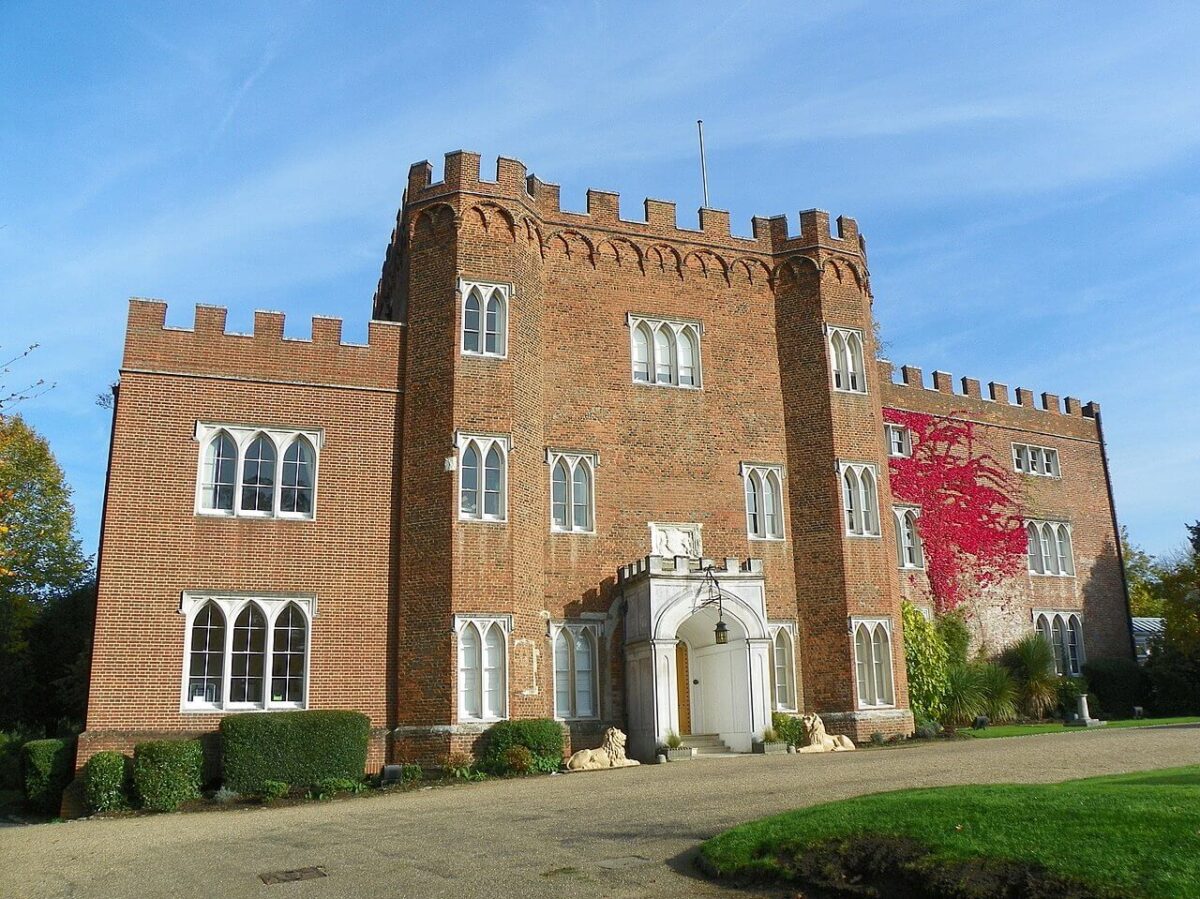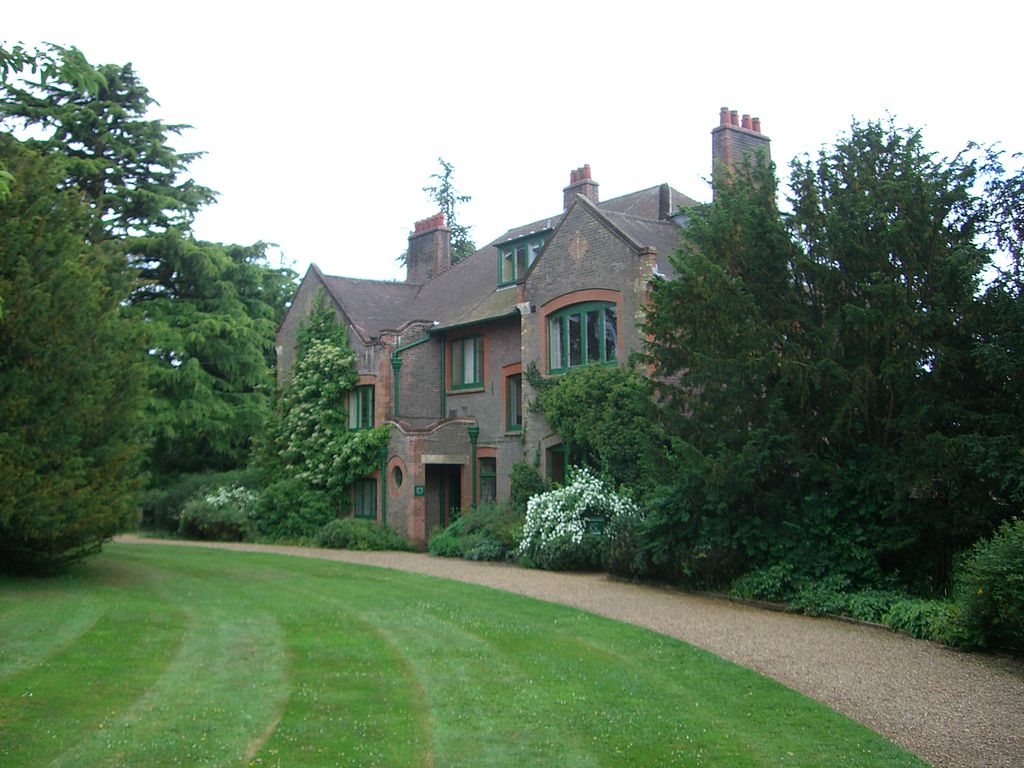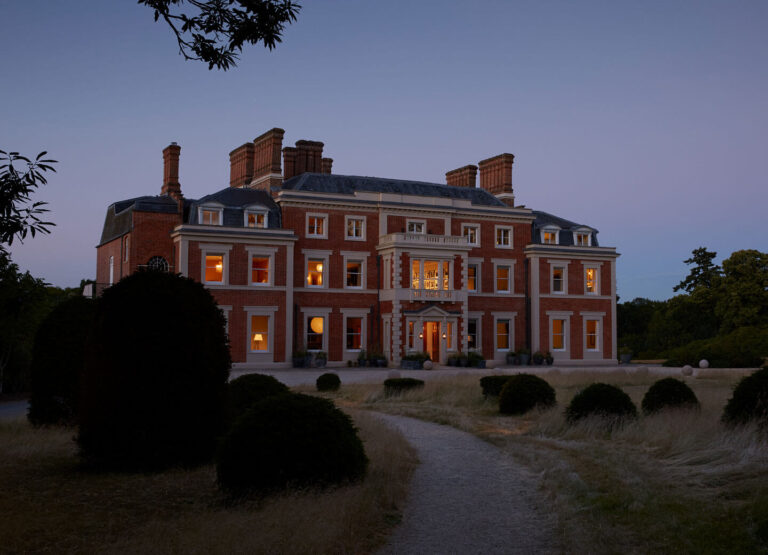The Best Hertfordshire Castles and Stately Homes
The stately homes and castles in Hertfordshire have been the homes of Kings, Queens, and British Prime Ministers. And with Hertfordshire’s close proximity to London, these historic houses can easily be visited on a day trip from London.
Hertfordshire is one of the home counties and it’s located north of London. The county has historic villages and beautiful landscapes such as the Chiltern Hills, an Area of Outstanding Natural Beauty.
The Hertfordshire castles and country houses are a treat for every member of the family. Besides learning more about their fascinating histories, you can also wander in the beautiful gardens, play in the adventure playgrounds, or stay the night in one of the country house hotels in Hertfordshire.
These are the best country house and castles in Hertfordshire.

Hertford Castle
The original castle was a Norman structure that was built by the River Lea. Most of that building has not survived. What you see today is the Tudor gatehouse. The castle was greatly used during the Tudor royal times, as a royal residence and as a prison. Some of the Knights Templar were imprisoned at Hertford Castle as well as King David II of Scotland and King John II of France.
The Tudor Kings often granted Hertford Castle to their wives.
In 1418, King Henry V gave the castle to his wife Catherine of France and they spend much time there. After the War of Roses, King Edward IV granted the castle to his wife Elizabeth Woodville. And Henry VII gave the castle to his wife Elizabeth of York. Queen Elizabeth I was also a frequent visitor to Herford Castle as she spend much of her childhood here.
Where: Hertford
Built: 11th century & 1540s
Style: Tudor
Visitor information: the castle is occasionally open to the public. Visit the website for more information.

Brocket Hall
Brocket Hall is a Neoclassical country house that was built in 1760. The house was the home of two British Prime Ministers: Lord Melbourne and Lord Palmerston. During Lord Melbourne’s time as a prime minister, Queen Victoria often visited the hall. There was also scandal in his life as Lord Melbourne’s wife, Lady Caroline Lamb, had an affair with Lord Byron.
When Lord Melbourne died, the estate passed to his sister who was married to Lord Palmerston, another Prime Minister.
Brocket Hall is now an event venue with a golf course, and a restaurant. Melbourne Lodge (a Georgian coach house) is a holiday accommodation.
Where: Welwyn Garden City
Built: 1760
Style: Neoclassical
Visitor information: Visit the website for more information.

Hatfield House
Built by Sir Robert Cecil, 1st Earl of Salisbury, Hatfield House is one of the finest Jacobean country houses in England. The house was built in 1611 next to the Old Palace of Hatfield and was meant to entertain the Royal Court. The house has splendid State Rooms with fine paintings, furniture, and tapestries as well as a richly carved wooden Grand Staircase.
The Old Palace of Hatfield, from which some remains have been preserved, was the childhood home of Queen Elizabeth I and King Edward VI. Due to this connection, Hatfield House holds many items belonging to Queen Elizabeth I, including the “Rainbow Portrait” that hangs in the Marble Hall.
The estate houses 42 acres of gardens that were designed in the early 17th century by John Tradescant the elder.
Where: Hatfield
Built: 1611
Style: Jacobean
Visitor information: the house and gardens are open to visitors. Visit the website for more information.

Knebworth House
Knebworth House is a Gothic Tudor country house in Hertfordshire. The romantic exterior with turrets, domes, and gargoyles is a grand example of Victorian Gothic architecture. However, the house is far older than that. The history of the house goes back 500 years to Tudor times when a red brick manor was built.
The house has had some notable residents such as author and politician Sir Edward Bulwer Lytton, Lady Constance Lytton (a Suffragette), and architect Sir Edwin Lutyens who also redesigned the interiors.
Knebworth House is currently the home of screenwriter Henry Lytton-Cobbold. The grounds include 28 acres of formal gardens, an adventure playground, a dinosaur park, and a tea room. The grounds are also the location of the Knebworth Festival.
Where: Knebworth
Built: 15th century/19th century remodel
Style: Gothic
Visitor information: the house and gardens are open to visitors. Visit the website for more information.

Gorhambury House
Gorhambury House is a Palladian-style country house near St Albans. The house was built between 1777 and 1784 for James Grimston, 3rd Viscount Grimston, after a design by Sir Robert Taylor.
Architect Sir Robert Taylor is mainly known for designing The Bank of England and villas surrounding London. Gorhambury is one of the largest completed houses by his design. Like many of his designs, Gorhambury has a spiral cantilevered staircase and a double-height hall. Other notable features of the house are fireplaces designed by Piranesi.
Old Gorhambury House
Gorhambury House was designed to replace the crumbling Old Gorhambury House. This building was built in the 16th century by Sir Nicholas Bacon, Lord Keeper of the Great Seal for Queen Elizabeth I.
Eventually, the house fell into ruin, what remains are a two-story porch, chapel, and clock tower.
Where: St Albans
Built: 1563–68 (Old Gorhambury House) 1777-84 (New House)
Style: Palladian
Visitor information: Both houses are open to visitors. Visit the website for more information.

Rye House
Rye House is a former fortified manor house in the Lee Valley Regional Park. The only structure that remains of this house is the gatehouse. The manor house was the home of the Parr family in the 16th century. Future queen Catherine Parr (the sixth and last wife of King Henry VIII) lived here until 1531.
The house gave its name to the Rye House Plot, a plan to kill King Charles II of England and his brother James, Duke of York. At that time, the house was leased by Republican and Civil War veteran Richard Rumbold. He was exiled for his role in the plot and two years later he was executed for taking part in the Argyll’s Rising.
Where: Hoddesdon
Built: 15th century
Visitor information: the gatehouse is open to the public. Visit the website for more information

Shaw’s Corner
Shaw’s Corner is an Edwardian Arts and Crafts home that was the home of Irish playwright George Bernard Shaw. Originally, the house was built as a rectory and Shaw lived here from 1906 until his death in 1950. In 1925 George Shaw was awarded to Nobel Prize in Literature.
At the bottom of the garden, a small hut was built which Shaw called “London”. So that when unwanted visitors called on the house, they could be told that Shaw was “visiting the capital”. A bust of George Bernard Shaw designed by Rodin can also be seen at the house.
Where: Ayot St Lawrence
Built: 20th century
Style: Arts and Crafts
Visitor information: the house is owned by the National Trust and is open to visitors. Visit the website for more information.
Related Post: Visit Famous Writers’ Houses in England

Berkhamsted Castle
Berkhamsted Castle is a ruined motte and bailey castle that was built after the Norman conquest of England. The castle was built in a strategic location on a key route between London and the Midlands.
The castle was used between the 11th century and the 15th century. It was besieged and captured by Prince Louis (later King Louis VIII), a year later the royal forces retook the castle after which it was granted to Richard, Earl of Cornwall who also added a 13th century palace complex.
Where: Berkhamsted
Built: 11th century
Visitor information: the castle is owned by English Heritage and is open to the public. Visit the website for more information.

Wrotham Park
Wrotham Park is a neo-Palladian country house designed by Isaac Ware for Admiral John Byng (4th son of Admiral Sir George Byng). The house is located only 17 miles from Hyde Park Corner and it’s one of the largest private houses near London.
In 1883, a large fire broke out at the top of the house. Fortunately, all important content was saved and the interiors were rebuilt. The house still belongs to the Byng family.
The house is often used as a film location, mainly for period dramas such as Sense and Sensibility, The Crown, and Bridgerton.
Where: South Mimms
Built: 1754
Style: neo-Palladian
Visitor information: the house is an exclusive event venue and it is not open to the public.
Country House Hotels in Hertfordshire
You can also stay in some of the fine country houses in Hertfordshire. These countryside hotels with spas, swimming pools, and golf courses are a wonderful countryside retreat while still close to London.
The Grove Hotel
The Grove is a Palladian country house that is now turned into a luxury hotel only 18 miles from London. The house was built in the early 18th century and for 150 years it was the family seat of the Earls of Clarendon. In the early 20th century the house was turned into a five-star hotel set in 300 acres of stunning Hertfordshire countryside. It has a spa, a championship golf course, and several restaurants.
Book your stay at The Grove Hotel

Fanhams Hall
Fanhams Hall is an 18th century country house built in Queen Anne Style. Though in the early 20th century the house was enlarged into a Jacobean style country house.
The house is the birthplace of Sir Henry Page-Croft (Lord Croft) who was Winston Churchill’s Under-Secretary of State for War.
Surrounding the house are formal gardens with ornamental lakes created by Japanese gardeners. The house is currently a hotel and wedding venue.

Pendley Manor Hotel
Pendley Manor is a Victorian country house near Tring. The house was built near the site of an old manor house by Joseph Grout Williams, a local landowner and mill owner. BBC show jumping commentator Dorian Williams was the last private owner of the house. He turned it into a center for adult education and the arts after World War Two. The Pendley Open Air Shakespeare Festival has been held on the grounds since 1949.
Since the late 20th century, Pednley Manor has been a four-star country house hotel with a spa and an indoor swimming pool all set in 35 acres of wooded parkland.
Book your stay at Pendley Manor Hotel





